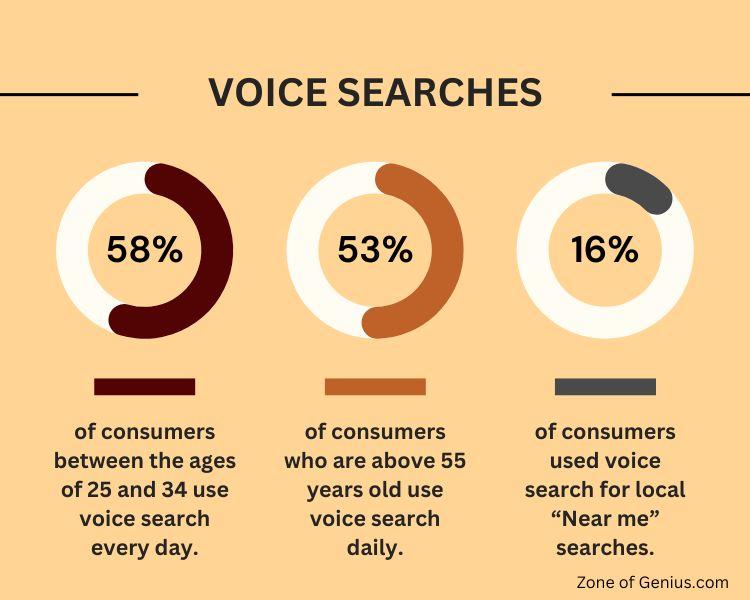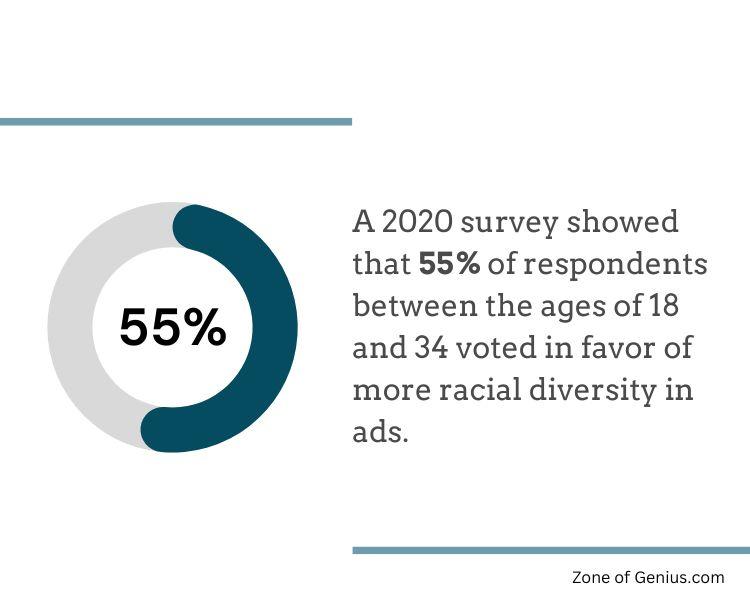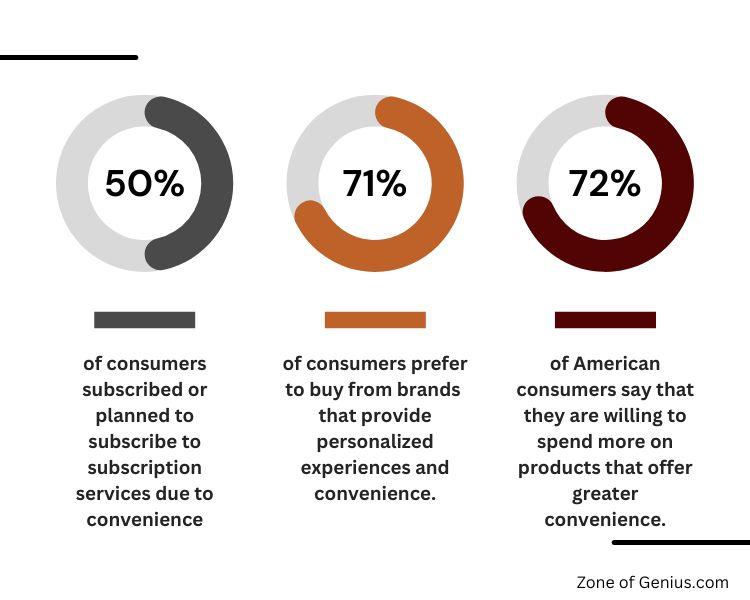Understanding consumer behavior is the holy grail of consumer-centric businesses. Keeping up with emerging consumer behavior trends is essential to staying ahead in the market, which is influenced by societal shifts and technological advancements.
In this post, we will list the top 11 consumer behavior trends in 2024. Whether you’re a marketer aiming to fine-tune your strategies or a business owner wanting to adapt your offerings, these trends can empower you to chart a course for success.
1. The Growing Influence of Social Media on Consumer Choices
Social media platforms have evolved from mere communication channels to powerful tools influencing consumer decisions and behavior. Today, consumers increasingly rely on social media for inspiration and as a primary source of information before making purchases.
Influencer endorsements, peer reviews, and user-generated content on these platforms significantly impact consumer preferences and trust.

Platforms like Instagram, TikTok, and Pinterest have become digital showcases where trends are set and products are discovered. Brands that effectively leverage these channels to engage with their audience are more likely to see an increase in consumer loyalty and conversion rates.
This trend highlights the significance of businesses having a social media presence, actively engaging their audience, creating captivating content, and nurturing a community around their brand. When harnessed effectively, social media can turn consumers into brand advocates, amplifying the business’s reach and influence in the digital realm.
Read: Unlock Social Media Success With Customer-Generated Content
2. Artificial Intelligence on Shopping Behavior
AI’s role in analyzing consumer data, predicting behaviors, and offering personalized shopping experiences for consumers is growing. AI-driven voice assistants, chatbots, and predictive analytics will continue to shape how consumers discover and buy products.
Artificial Intelligence (AI) is becoming better and faster at crafting more personalized, efficient, and engaging shopping experiences. By leveraging massive datasets, AI can anticipate consumer needs, customize recommendations, and streamline shopping, making it more interactive and intuitive.
An example of this trend in action is AI-powered chatbots used by e-commerce platforms. These chatbots can interact with customers in real time, answering questions, recommending products based on browsing history, or even solving basic issues with orders.
Using these chatbots enhances the customer experience by providing immediate assistance. It also allows the company to gather valuable data on customer preferences and behaviors, further refining the AI’s ability to serve the customer’s needs.

Read: 9 Ways Entrepreneurs Are Leveraging AI in Their Business
3. Consumers Opt for Personalized Omnichannel Experiences
Gone are the days when consumers were content with generic shopping experiences. Customized, omnichannel experiences are now the gold standard.
Omnichannel is a multi-channel approach to sales that provides customers with a seamless shopping experience, whether from a mobile device, a laptop, or a brick-and-mortar store.
This strategy involves integrating the various channels to create a unified, consistent experience personalized to each user. Customers expect a seamless experience across online and offline channels with personalized recommendations, tailored messaging, and consistent service.
One example of an omnichannel consumer trend is how some retail companies integrate their online shopping platforms with their physical stores. For instance, customers can begin shopping on a brand’s mobile app, adding items to their cart. They can then pick up these items in a physical store, where employees have prepared their orders. This seamless integration provides convenience and a deeply personalized shopping experience that resonates with their preferences.
4. Consumers Opt for Brands That Are Inclusive and Diverse in Their Strategies
Inclusivity and diversity have transitioned from societal topics to pivotal factors in consumer decision-making processes. Today’s consumers are increasingly seeking brands that acknowledge and celebrate diversity in their products, marketing, and corporate ethos.
This shift towards inclusivity encompasses a broad spectrum of dimensions, including race, gender, age, and abilities, challenging brands to create products and services that cater to varied audiences.

A notable example of this trend is the fashion industry, where brands expand their product lines to include a broader range of sizes, colors, and styles to suit different body types, skin tones, and cultural backgrounds.
Makeup brands, for instance, are lauded for launching foundation lines with an extensive array of shades, ensuring that every consumer can find a match that feels personally tailored to them.

This emphasis on inclusivity and diversity fosters a more equitable marketplace and strengthens brand loyalty among consumers who feel seen, heard, and valued. Proactive brands in this area will likely cultivate a more diverse consumer base, enhancing their market reach and impact.
5. Sustainable Practices as a Core Brand Value
The push towards sustainable practices is more than just a consumer preference—it’s a global imperative. Sustainability isn’t limited to eco-friendly products; it encompasses a brand’s entire operation, from supply chain logistics to energy use and even to the corporate culture that guides its decision-making processes.
An excellent example of this trend in action is the fashion industry’s shift towards transparency and sustainability. Brands like Patagonia and Everlane have set industry standards by not only offering products made from recycled and sustainable materials but also by publicly sharing the details of their supply chains and the environmental impact of their products.
They actively engage in practices that reduce waste, promote fair labor, and minimize carbon footprints, setting a benchmark in the fashion industry. By doing so, they appeal to a growing demographic of consumers who look beyond the product.
55% of consumers say that they are willing to pay more for eco-friendly brands. Also, about 75% of sustainable goods sell better online than in-store
TheRoundup.org
6. The Expansion of the Holiday Shopping Season
The holiday shopping season has traditionally been a rush of sales and promotions confined to the period between Thanksgiving and Christmas. However, a noticeable trend for 2024 is this season’s expansion, starting earlier and ending later. This trend is driven by consumers’ desire to avoid the last-minute rush and the associated stress, as well as businesses aim to maximize sales opportunities.
Retailers are starting to offer holiday deals as early as October, extending through to January, capitalizing on the increased demand for longer shopping periods. This not only helps distribute consumer spending more evenly but also smooths out operational challenges like shipping delays and inventory management that often plague the traditional holiday shopping season.
An example of this trend is a well-known online retailer offering “Early Holiday Deals” as a precursor to their annual Black Friday and Cyber Monday sales events. This not only encourages early spending but also spreads it over a few months, providing consumers with a less stressful and more enjoyable shopping experience.

7. Consumers Value Thoughtful Services & Convenience
Convenience is no longer just about quick and easy commerce. Consumers value thoughtfulness in the form of:
- Personalized delivery
- Hassle-free returns
- And simplified checkout processes.
Brands that go the extra mile to ease the customer’s path will see higher loyalty.

Convenience as a consumer trend underscores a shift in consumer expectations, where simplicity, efficiency, and personalization in the shopping experience are highly valued. This trend is rooted in the desire for a frictionless interaction with brands, from searching for products to post-purchase services.
This trend exemplifies the rise of subscription-based models across various sectors, from food delivery to personal care. These services exemplify convenience by regularly delivering products directly to consumers’ doorsteps, often tailored to individual preferences and habits. This model eliminates the need for repeated decision-making or trips to the store, offering a seamless, personalized shopping experience that aligns perfectly with today’s busy lifestyles.
8. The Continual Shift Toward Leisure and Wellness
Self-care and wellness are becoming an intrinsic part of consumer lifestyles. Expect an increase in demand for products and services that promote relaxation, mindfulness, and personal well-being. This trend extends to everything from athleisure wear to mental health apps.
The leisure and wellness trend underscores the growing importance of consumers’ mental and physical health. This trend drives demand for products and services that enhance well-being and provide relaxation. People increasingly prioritize activities and purchases that contribute to their overall health, pursuing hobbies like yoga, meditation, and wellness retreats.
One such example of this trend is the popularity of meditation apps, which offer guided sessions to improve mental health. These digital tools are designed to make wellness practices more accessible to everyone, reflecting a broader shift towards prioritizing personal health and well-being in daily life. This move towards leisure and wellness signifies a more profound societal shift towards valuing self-care and mental health as essential components of a balanced lifestyle.
9. Consumers Push for Transparent Data Privacy Practices
Consumer concerns about data privacy are more acute after several high-profile data breaches and the implementation of GDPR (General Data Protection Regulation) and similar regulations. Brands that prioritize and transparently communicate their data privacy practices will build trust and loyalty.
In 2024, the emphasis on data privacy practices as a consumer trend underscores a pivotal market shift. As digital interactions and e-commerce expand, consumers become increasingly aware and concerned about how their data is collected, used, and protected. This collective awareness has compelled brands to adopt more transparent and secure data-handling practices to maintain consumer trust and compliance with regulatory requirements.
For instance, a notable example of this trend is the rise of “privacy by design” in product and service development. This approach integrates data privacy considerations into the product development process from the outset rather than as an afterthought.
A practical application of this could be a social media platform that offers users granular control over their privacy settings right from their initial sign-up, allowing them to choose what exact information they share and with whom.
10. Consumers Integrate Smart Technologies Into Their Everyday Life
Smart technologies are increasingly becoming a staple in consumers’ daily routines, offering unprecedented convenience, efficiency, and personalization. This trend reflects the growing integration of IoT (Internet of Things) devices into everyday life, from smart home systems to wearable fitness trackers. Consumers are drawn to these technologies for their ability to streamline tasks, provide insightful data, and enhance lifestyle quality.
A vivid example of this trend is the increase of smart home devices, such as voice-activated assistants, that can control lighting, temperature, security, and kitchen appliances through simple voice commands or a smartphone app.
These devices not only offer convenience but also help to optimize energy usage, increase home security, and contribute to a more comfortable living environment.
The appeal of integrating technology into everyday life lies in its ability to adapt to individual preferences and routines, making smart technology an indispensable part of modern living.
11. The Rise of Personalized Product Segmentation
In recent times, many consumers have valued individualism and personal identity; therefore, personalized product segmentation stands out as a key consumer trend.
Segmentation is the process of dividing a broad market into smaller, more defined groups based on specific characteristics such as needs, preferences, or demographics.
Brands leverage technology to offer customized products and services, allowing consumers to tailor their purchases to their unique preferences and needs. From personalized skincare regimens based on genetic analysis to custom-fit clothing created through 3D scanning, personalization is expanding.
This trend enhances the shopping experience and strengthens the emotional connection between consumers and brands. By recognizing and catering to their customers’ individuality, companies are setting a new standard in consumer engagement.
78% of consumers are more likely to buy again from companies who personalize their products and services
McKinsey
One vivid example of personalized product segmentation is Nike’s customization service, Nike By You. This service allows customers to design their sneakers by selecting colors, patterns, and materials to match their style. Such customization not only enables Nike to cater to each customer’s unique tastes but also empowers consumers to express their individuality through their footwear.
12. The Influencer Impact on Consumer Behavior
The role of influencers in shaping consumer trends cannot be overstated. With the rise of social media platforms, influencers have become pivotal in driving brand awareness, fostering trust, and influencing purchasing decisions among their followers.
Influencers offer a more relatable and authentic form of marketing. Their audience often sees them as trusted peers. This peer-like relationship means consumers are more likely to take their recommendations seriously, making influencers extremely valuable for brands seeking to connect with audiences meaningfully.
49% of consumers depend on influencer recommendations to buy products. 40% consumers purchased something after seeing it on Twitter, YouTube, or Instagram. 51% of marketers say influencer marketing helps them acquire better customers.
Digital Marketing Institute
A prime example of influencer impact in the beauty industry is the collaboration between influencer James Charles and cosmetics brand Morphe. The launch of the James Charles x Morphe palette was met with unprecedented demand, selling out within minutes of its release. This collaboration highlights not only the direct influence influencers have on consumer purchasing decisions but also the power of authentic brand partnerships.
By aligning with influencers who genuinely resonate with their product and brand values, companies can unlock a level of consumer engagement and loyalty that traditional advertising channels struggle to achieve.
Read: Influencer Marketing Can Work Well. But Do Your Research
Final Thoughts
The consumer behavior trends in 2024 present a blend of ethical, technological, and personal wellness trends that dictate the market dynamics. Businesses willing to align their operations, marketing strategies, and product lines with these evolving consumer preferences will gain a competitive edge.
Additionally, understanding and adapting to these trends is not just about staying relevant but also about leading the charge toward a future where businesses and consumers share values and goals.
Furthermore, this surge in consumer-driven demands signals a broader change in how businesses and consumers interact. By fostering relationships based on trust, value, and mutual benefit, brands will not only captivate the attention of the 2024 consumers but will also set the stage for enduring success.
Frequently Asked Questions
Businesses can stay attuned to changing consumer behavior trends by investing in market research, engaging with customers through social media to gather feedback, and fostering a culture of adaptability and innovation within their organization. This approach helps ensure that they can quickly respond to and even anticipate changes in consumer behavior.
Personalized product segmentation allows businesses to cater to their customer’s specific needs and preferences, enhancing customer satisfaction and loyalty. For consumers, this means products that truly fit their desires and requirements, providing a more tailored and satisfying shopping experience.
Influencers can sway consumer behavior by leveraging their perceived authenticity and trustworthiness. When they recommend a product or a brand, their followers are more likely to consider those endorsements credible, influencing their purchasing decisions.
Companies use various methods to assess environmental impact, including life cycle assessments (LCA) that examine the environmental effects associated with all stages of a product’s life, from raw material extraction through materials processing, manufacture, distribution, use, repair, maintenance, and disposal or recycling.
While personalization offers many benefits, it comes with challenges, such as privacy concerns. Customers may be wary of sharing too much personal information. Additionally, excessive personalization can lead to choice paralysis, where consumers feel overwhelmed by the options available.
Resources:
- 20 Surprising Influencer Marketing Statistics – Digital Marketing Institute
- 50% Of U.S. Consumers Use Voice Search Daily – UpCity
- 52 Huge Environmentally Conscious Consumer Statistics – TheRoundup.org
- 55+ Personalization Statistics (New 2024 Data) – Exploding Topics
- Consumer behaviors and opinions on social media content in the United States in 2022 – Statista
- Convenience Statistics: Market Report & Data – Gitnux.org
- Inclusive ads are affecting consumer behavior, according to new research – Think With Google
- Leading reasons to use product/service subscriptions worldwide in 2023 – Statista
- Opinions on including racial diversity in advertising according to adults in the United States as of June 2020, by age group – Statista
- The value of getting personalization right—or wrong—is multiplying – McKinsey
US holiday shopping 2023: Consumer caution and retailer resilience – Mckinsey.com
Related Posts:







